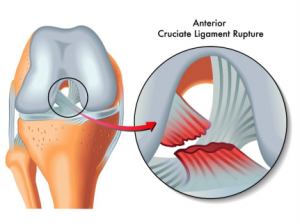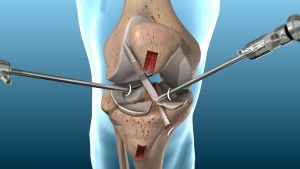ACL INJURY BLOG SERIES – PART 2 (What to do after an ACL injury?)
Hi everyone, welcome to part 2 of our ACL injury blog series. In this blog, we will discuss whether you should get an ACL recon, or manage it conservatively through rehabilitation.
The dreaded ACL rupture has been a feared injury for a long time. In elite and recreation level sporting environments, it has been known as a season ending or even a career ending injury. The growing area of injury management has provided some help in giving people a way back to their sports. Traditionally, this path has been a surgical intervention looking at using part of either the patella or hamstring tendon to create a new ACL, and advice from health professionals was that return to sport was impossible without surgery. The likelihood of developing osteoarthritis (OA) in the future was all but guaranteed without it. But there are issues with this, even with surgery, recovery time is generally still 10 to 12 months for recreational level athletes. However, full recovery is definitely not guaranteed, with many athletes re-rupturing their graft on return to sport.

Interestingly, in recent years increasing numbers of athletes have been opting to go without the surgery, noting even shorter recovery times and less complicated rehabilitations. However, some have tried, failed, and needed surgery later. So, how do we make sense of all this?
If we delve further into the research, whether an individual should or should not get surgery becomes more of a case by case decision with many variables in play which we could discuss for days on end. Below I will attempt to summarize what the research is currently saying in regard to the most optimal care for individuals who have suffered an ACL rupture.
What are the facts?
Firstly though, let’s have a look at some numbers that may surprise you in regard to surgery vs non-surgical approaches to ACL injuries:
- There are no reported differences in functional knee outcomes at 2 and 5 years when comparing surgical vs non-surgical approaches to ACL injuries in recreational athletes.
- The chances of developing knee OA 10 years after ACL injury is 7x greater than those without an ACL injury in non-operative patients compared to 8x greater in those who were managed surgically
- Only 24% of non-elite athletes returned to sport within 12 months after ACL reconstructive surgery
- 45% of individuals initially identified as needing ACL reconstructive surgery became able to cope without surgery after 10 sessions of rehab in non-elite settings.

These numbers should surprise you and if thinking about them didn’t provide more questions than answers you’d be one of very few people. To summarize, recreational level individuals are generally no better when comparing surgical vs non-surgical interventions after 2 years. You are slightly more likely to get OA if you have surgery as opposed to if you opted not to. And rehab can make a huge difference in terms of whether you actually need surgery or not. The reasons why we don’t have all the answers to and would require an article on their own to discuss.
So how do clinicians decide who gets surgery and who doesn’t?
The bottom line is the decision is different for everyone and very much revolves around the goals and values of the individual. However, emerging research is pointing to best care for athletes being centered around an initial trial of conservative treatment. During this time, a decision can be made on whether the knee is stable enough to do what the person wants it to. If the individual continues to have incidents of instability and buckling then this may be an indicator that this person needs surgery to regain that stability. Nevertheless, the number of individuals that this may apply to is becoming increasingly smaller. For professional athletes where money is no object and time is of the essence it is understandable that decisions are made quickly, but again it would surprise you the number of athletes who are opting for the non-surgical route.
Although there are a lot of questions still to be answered in this area of research, there are some things that we do know that must filter into clinical practice and be passed on to athletes. We must question any statement that implies ACL reconstructive surgery is a quick and easy fix. Conservative treatment is a very legitimate treatment path, and for many individuals is the right decision. We must also take into account the now-known added risks of ACL surgery in regard to joint health. The most important aspect affecting patient outcomes is the quality of the rehab.
This area of research seems to be unfolding more and more every year. As ever, speaking to a clinician who is up to date with the current research is hugely important to the outcomes of the individual. If you found this blog interesting or have any questions in regard to ACL injury rehab please contact us at Insync Physiotherapy in Marrickville, we’d be happy to help. Stay tuned for our next blog where we will talk about what’s involved in the rehabilitation of ACL injuries.
ACL INJURY BLOG SERIES:
Part 1: What is an ACL injury?
Part 2: Surgery or No Surgery?
References for pictures:
(https://www.mocnyc.com/acl-reconstruction/)
